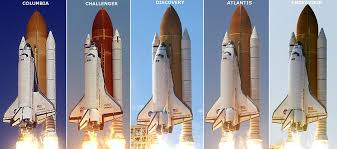The Space Shuttle program, a series of partially reusable spacecraft developed and operated by NASA, was a significant milestone in human spaceflight. Launched in 1981 and concluding in 2011, the program enabled the United States to conduct frequent missions to low Earth orbit and support the construction of the International Space Station (ISS).
Key Features of the Space Shuttle
- Partially Reusable: Unlike traditional rockets, which are discarded after a single use, the Space Shuttle was designed to be partially reusable. The orbiter, the main component of the spacecraft, could be returned to Earth for refurbishment and reuse.
- Launch and Landing: The Space Shuttle was launched atop a large solid rocket booster and an external tank. After reaching orbit, the solid rocket boosters were jettisoned and the external tank was emptied. The orbiter then landed on a runway like an airplane.
- Cargo Capacity: The Space Shuttle could carry a significant amount of cargo into orbit, including satellites, scientific experiments, and supplies for the ISS.
Major Accomplishments
- Construction of the ISS: The Space Shuttle played a crucial role in the construction of the International Space Station, delivering modules, equipment, and supplies to the orbiting outpost.
- Scientific Research: The Space Shuttle enabled a wide range of scientific experiments to be conducted in low Earth orbit, contributing to our understanding of the universe and the human body in space.
- Satellite Launches: The Space Shuttle launched numerous satellites into orbit, including communications satellites, weather satellites, and scientific research satellites.
Challenges and Controversies
Despite its successes, the Space Shuttle program also faced challenges and controversies. These included:
- Safety Concerns: The Space Shuttle program experienced several accidents, including the Challenger disaster in 1986 and the Columbia disaster in 2003. These tragedies led to a thorough review of the program and the implementation of safety measures.
- High Costs: The Space Shuttle program was expensive to operate, and there were ongoing debates about whether the costs were justified by the benefits.
- Limited Capabilities: The Space Shuttle was primarily designed for missions to low Earth orbit. It was not capable of deep space exploration, limiting its potential for future missions.
Legacy of the Space Shuttle
The Space Shuttle program left a lasting legacy. It demonstrated the capabilities of human ingenuity and cooperation, and it inspired a new generation of space explorers. The technologies developed for the Space Shuttle program have found applications in a wide range of fields, including medicine, communication, and transportation.
While the Space Shuttle program has concluded, its legacy will continue to shape the future of space exploration. The knowledge and experience gained from this program will be invaluable as we strive to achieve even greater feats in the years to come.
